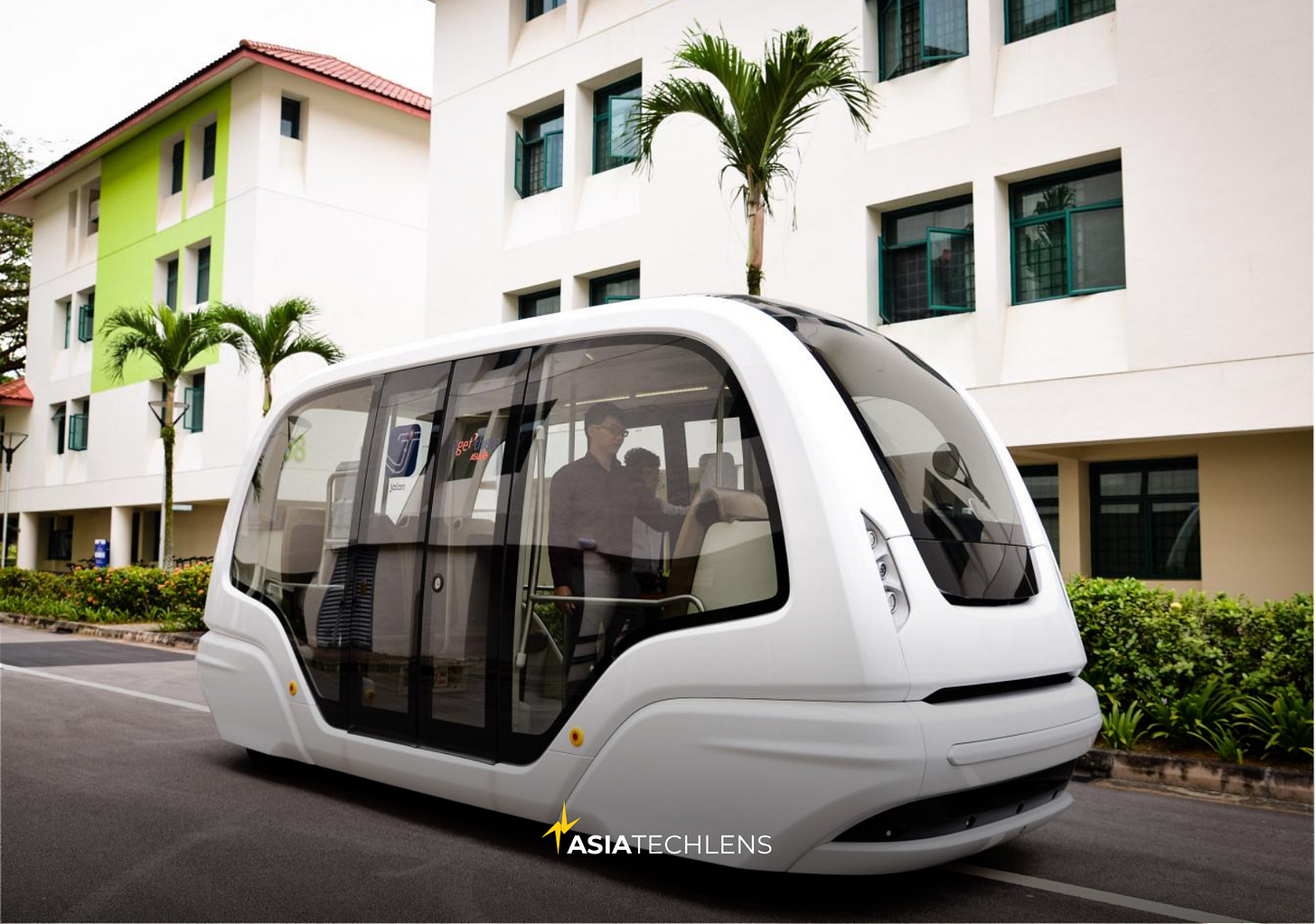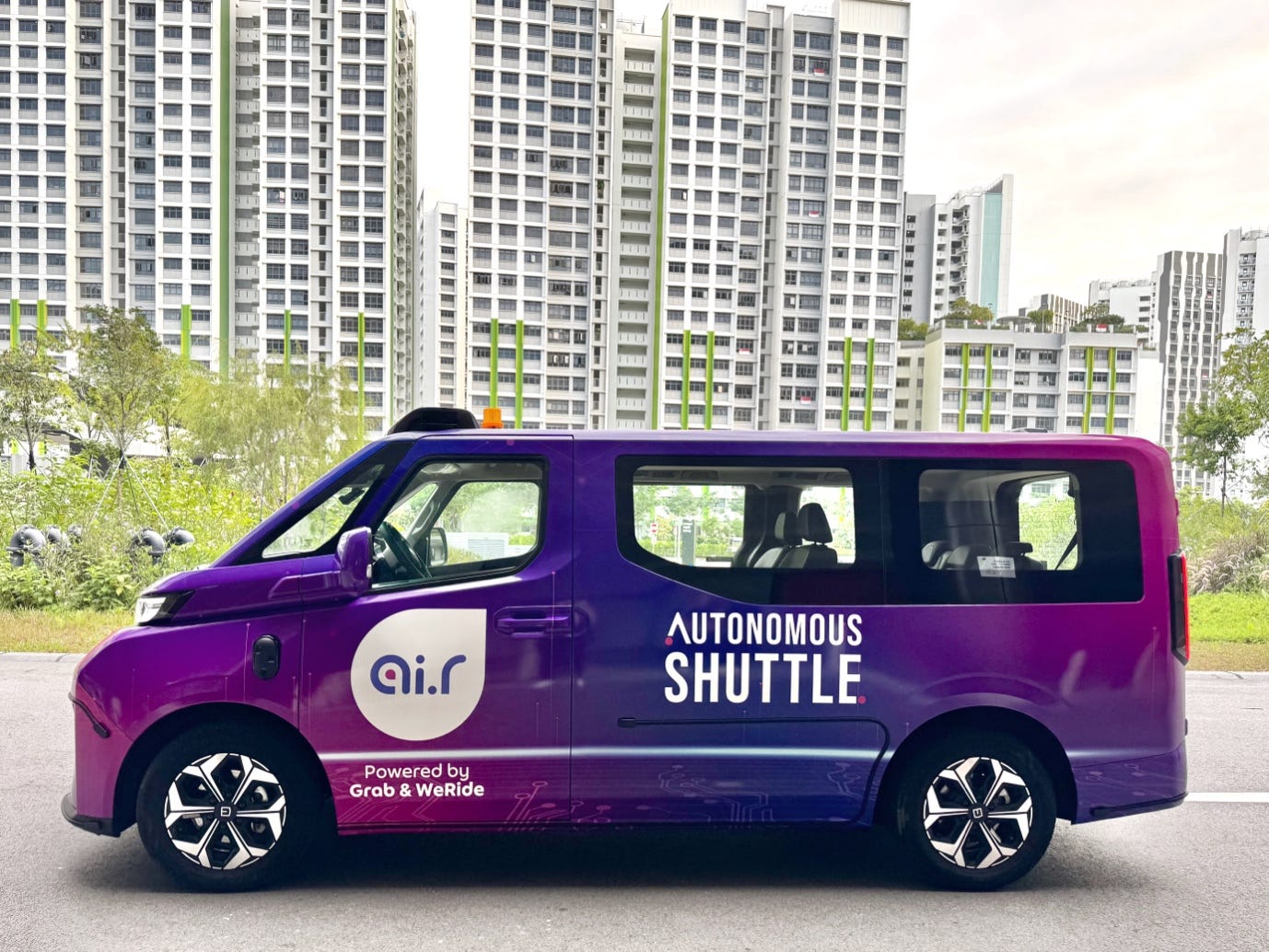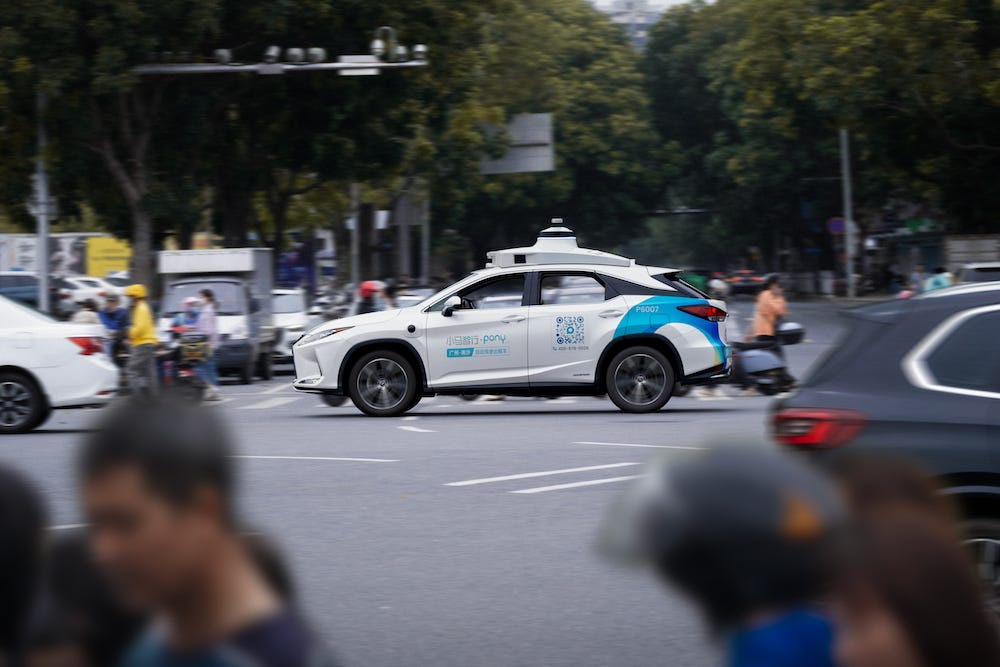Singapore’s Driverless Proving Ground: How Chinese AVs Are Turning Pilots Into Proof
Tightly regulated routes, data-driven oversight, and local partnerships are turning Singapore into the world’s most credible AV sandbox

When Grab unveiled its partnership with WeRide last month to deploy autonomous shuttles on consumer routes in Punggol, Singapore crossed a key threshold - from closed-door tests to rides open to everyday residents.
Building on WeRide’s fully driverless robobuses already running at Resorts World Sentosa since July, this is Southeast Asia’s boldest step yet toward public autonomous-vehicle (AV) access.
While the idea of AVs may feel premature for most emerging markets in the region, Singapore is the exception - advancing rapidly with vehicles guided by sensors and software, not human hands.
In the U.S., Tesla’s autopilot, Waymo’s robotaxis, and enablers like NVIDIA and Mobileye are racking up miles; in China, automakers such as BYD, Xpeng, and Geely join tech firms like Baidu (Apollo Go), Pony.ai, and WeRide.
The latest moves - Pony.ai’s tie-up with ComfortDelGro for fixed-route services and a BYD-led consortium’s new LTA pilot with SBS Transit - signal a shuttle-first strategy: geofenced services tackling first- and last-mile gaps.
By leaning on Chinese partners, Singapore is testing reliability and costs in a tightly regulated environment, paving the way for broader rollout.
Together, these launches turn Singapore into Asia’s most data-dense AV testbed - one where regulation, not hype, drives adoption.
The rewards? Everyday services for locals and hard-won credibility beyond China for vendors. True hub status hinges on expanding to multiple neighborhoods, phasing out onboard safety operators where data supports it, and sharing uptime and safety metrics openly.
Why Singapore?
“I’d welcome a Waymo-style service here,” says Georg Ackermann, a Singapore-based tech writer who’s ridden Waymo in San Francisco.
“The convenience and reliability made all the difference - no cancellations, consistent availability, clean and smooth rides.”
The lived experience matches the policy design. Ackermann’s frictionless rides illustrate what Singapore hopes to replicate: reliability over novelty.
Ming Yii Lai, senior consultant at China-based Daxue Consulting, frames it as strategic positioning:
“Singapore sits between Shenzhen’s speed and San Francisco’s scrutiny - a low-risk, high-trust arena to prove code.”
Singapore’s appeal as an AV proving ground stems from its innovation-friendly ecosystem: clear regulations, predictable roads, robust digital infrastructure, and local partners eager to collaborate. Since 2017, LTA has issued more than 50 authorizations for AV trials, underscoring the city’s policy density and commitment to safe scaling.
At the heart of this is the CETRAN-to-staged-permits model. AVs begin on the Centre of Excellence for Testing and Research of Autonomous Vehicles (CETRAN) track at Nanyang Technological University (NTU), then graduate to limited public roads with safety operators, fixed routes, and mandatory data reporting.
As evidence mounts, authorities widen operating zones, tweak service rules, and greenlight operator-free runs - a phased approach that builds both operator confidence and public trust.
The city-state doubles as a sandbox for refining concepts, blending Asian and Western traits under strict yet transparent AV rules. WeRide’s tie-up with Grab exemplifies how consumer deployments can unfold safely here.
Singapore’s edge - superior charging networks, political stability, and tailored safety protocols - is ideal for Chinese firms seeking international validation, Lai tells Asia Tech Lens.
Slash Costs, Boost Miles
For Singapore, where the average bus driver is over 50 and recruitment lags behind demand, autonomy isn’t just innovation - it’s survival.
Driverless shuttles offer tangible economic wins amid worsening labor shortages. Traditional staffed buses rack up S$0.72–1.25 per passenger-km in operating costs, with drivers accounting for 40–70% of expenses, according to the journal “Economic Assessment of Autonomous Electric Microtransit Vehicles.”
Automation could halve that to S$0.31–0.55 per passenger-km, while shared AV rides dip even lower at S$0.16–0.65 per passenger-km.
For operators like SBS Transit, this means up to 50% savings on fleet costs, freeing subsidies for network growth and easing the labor squeeze - pressures that will only intensify as population rises.
China Plugs In
Singapore’s AV push is inseparable from Chinese firms’ involvement. These players excel at rapid commercialization, thrive in rule-heavy settings, and crave non-China proof points that appeal globally. Singapore delivers on all fronts.
Chinese AV stacks are modular and adaptable - core elements like perception, planning, and sensor fusion port over with few tweaks, according to Lai. The real work lies in local maps, traffic rules, and reporting, allowing vendors to deploy proven “brains” in a Singapore-specific shell.
Their operating style meshes perfectly with Singapore’s CETRAN pathway, where proven safety and uptime unlock bigger scopes. Rigorous iteration - a Chinese hallmark - accelerates those benchmarks.
Expansion favors partnerships: tech providers pair with local fleet operators or bid in consortia for public contracts. Models range from software licensing to full AV-as-a-service, depending on who owns and maintains the vehicles.
This showcase-to-hub shift energizes Chinese players: Punggol’s WeRide shuttles not only log uptime in Singapore’s Western-style regulatory sandbox but could export safety lessons to Gulf peers such as Dubai, whose AV pilots grapple with expat-driver gaps.
Modularity fuels transferability, but success requires baking in local data-governance rules during rollouts - evolving Singapore from an isolated demo to a scalable neutral ground.
In effect, Singapore offers Chinese AV firms something no domestic market can: a neutral, rules-heavy arena to prove global readiness.
Looking Ahead
Over the next two to three years, Chinese AV leaders such as WeRide and Pony.ai could echo EV expansions - kicking off in Singapore’s test zones before rippling into Southeast Asian cities and Gulf markets whose sandboxes mirror CETRAN’s discipline.
“The Belt and Road Initiative and deepening China–ASEAN–Gulf ties will fuel this trend,” Lai predicts.
Still, challenges persist: chip sanctions breed homegrown fixes, and geopolitical tensions strain alliances. As Lai notes, local partnerships and data adjustments are vital to sidestep pitfalls. Brand trust rides on it too.
Singapore’s open KPIs could be the proof that turns skeptics into adopters, letting Chinese AVs conquer roads worldwide.
If Singapore can prove Chinese AV reliability in daily public service - not fenced demos - it may export something more valuable than buses: trust in Chinese autonomy itself.
For More Info on Asia Tech Lens



